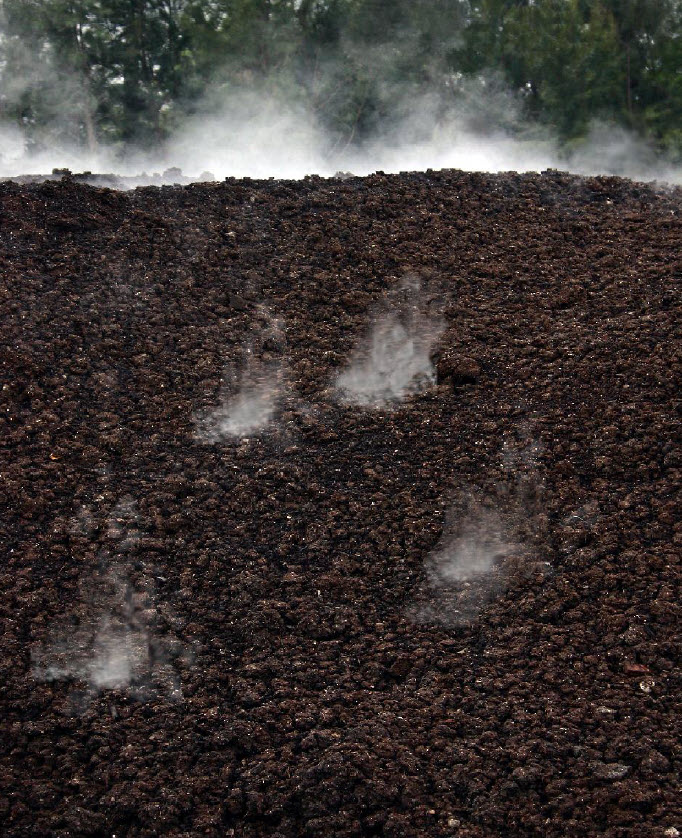Hot versus Cold Compost
As organic compounds in a compost pile are broken down by bacteria and fungi, heat will be released. Organic material can store an amazing amount of energy and the faster it decomposes, the hotter the pile will get. Anyone who has picked up piles of grass clipping even a few hours after raking can attest to the extreme temperatures that can develop in fresh, green material. In large, commercial composting facilities temperatures are monitored to prevent combustion from the heat of decomposition.
In order to process hot compost, make sure to include an adequate proportion of green material to feed the heat-producing bacteria. The pile must also be large enough to retain the heat it produces so that temperatures can build. Generally, the recommen-ded minimum size for a hot pile is 9 cubic feet (3 foot on all sides) although smaller piles can be managed to heat up. Contrary to intuition, turning the pile does not decrease temperatures. Instead, turning material from the outside to the core of the pile increases air space, remixes undecomposed material, and boosts the aerobic breakdown process.
Heat is an output of composting. Artificially heating the pile with sunlight or insulating the pile does not speed breakdown and isn’t necessary to maintain core temperature in Southern climates. However, extreme heat does kill weed seeds and eliminate disease-causing bacteria. Although the serious composter dreams of building a perfect pile that heats to 150oF and then finishes quickly into perfect, sweet, crumbly organic matter, not everyone has time, energy and materials to manage their compost that closely. By making a few adjustments, high temperatures are not necessary for home compost.

The advantages of cold compost are that it does not require intensive turning and monitoring. Also cold compost may be more fertile as more nutrients are lost in hot composting. Cold compost takes longer to decompose, so the first adjustment is patience. Hot compost may finish in three to five months, while cold compost may take six months to a year. To speed up cold compost, tweak the proportion of green material in the mix upward and turn more often. Also, adding weeds with seed heads to cold compost ensures future weed gardens. Remove seed heads of undesirable plants before adding the green material to the pile.